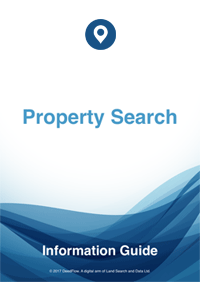Obtaining House Deeds
Contents
Article Summary
For 99% of our population, finding the Deeds to your house is as simple as obtaining copies of the Title Register and Title Plan, which can be obtained by you within an hour of placing an order over the internet. This is assuming that by Deeds you mean the ownership documents. If it is the old Associated Documents that you require you can still have copies of these within an hour, but only those that have been scanned by the Land Registry. In this article you can learn all about Land Registration and what the difference is between the Title Register and the Deeds. We also show you how to purchase copies of each.
Ownership Documents or Associated Documents?
"How to find the Deeds to your house" might refer to one of two questions, i.e.
- Are you trying to find your ownership documents? or
- Are you trying to find the actual Associated Documents, created prior to your property being registered at the Land Registry?
To answer the first question, another question needs to be asked. Is your property registered at the Land Registry? This will depend on when the property was last sold or mortgaged. If it was before 1990 it will depend on which part of the country you live in.
Land Registry became compulsory for all properties throughout England and Wales in 1990 following a sale or mortgage. Before that date Land Registration was phased in gradually for different areas.
Registered Properties
The ownership documents for registered properties are the Title Register and Title Plan. For unregistered properties they are the Associated Documents.
Title Register and Title Plan
The Title Register provides all the important information necessary to identify the owners of the property, the property itself, and the terms upon which it is owned, i.e. (briefly)
- Whether it is freehold or leasehold.
- Whether it is an absolute title, a possessory title or a qualified title.
- Whether there are restrictive covenants, rights of way, mortgages or other restrictions.
The Title Plan identifies the property on a large scale map based on the Ordnance Survey map, and shows the property in relation to adjoining properties, indicating any parts of the property affected by rights of way or access, restrictive covenants, etc.
If your property is registered and you require a copy of your ownership documents please select this link - Title Register. This will provide you with a link to the application form for a copy of the Title Register and Title Plan, which are charged at £19.95 each.
Associated Documents
If your property is registered but you require a copy of the Associated Documents, not the ownership documents, you can obtain a copy of those which the Land Registry have scanned and retained digitally, by selecting this link - Associated Documents. You will receive a copy of all those documents scanned, for the one price of £29.95.
Associated Documents are very helpful in so far as they contain much more detail of covenants, easements and restrictions than the Title Register contains. When the Land Registry refer to covenants, etc in the Title Register, only those which it considers important are referred to. Oftentimes, however, the remaining detail can help in identifying the borders of a property, mis-understandings relating to rights of way or rights of access, etc. They also provide a more complete history of the property.
Unregistered Properties
If your property is not registered at the Land Registry there will not be a Title Register or Title Plan. The ownership documents in this case are the actual Associated Documents. However, because the Land Registry will not even be aware of the property, it not being registered, you will not be able to obtain copies of the Deeds from them.
If the property is mortgaged to a bank or building society the Deeds will be with them. If there is no mortgage you should check to see if they are deposited with a former mortgagee, a bank or your solicitor.
If you have lost or mislaid them, you should instruct a solicitor to reconstitute them. He will do this by preparing Statutory Declarations which will need to be signed by yourself and any witnesses you have, and will require the following information:
- Copies of any Deeds or documents you have, even if only photocopies or abstracts (conveyancing summaries of the documents).
- Council tax and/or general rate receipts.
- Paid utility bills.
- Statements made by yourself, family and neighbours relating to your ownership
- Mortgage statements
When your solicitor has all the evidence he needs he will apply to the Land Registry for registration. They may only be able to give you a possessory title, which is not as good as an absolute title, but this can be converted to an absolute title after 10 years, provided that someone else doesn't in the meantime claim it is their property.
Title Register
The Land Registry Title Register holds data relating to the property ownership, purchase price, mortgage, tenure, covenants, rights of way, leases and class of title.
£19.95Title Plan
The Title Plan shows an outline of the property and its immediate neighbourhood, and uses colours to identify rights of way, general boundaries and land affected by covenants.
£19.95Associated Documents
Deeds creating Restrictions, Covenants, Easements, etc. are often kept digitally by the Land Registry and made available for sale due to their invaluable detail and content to assist in further understanding the Restrictions, etc.
£29.95


